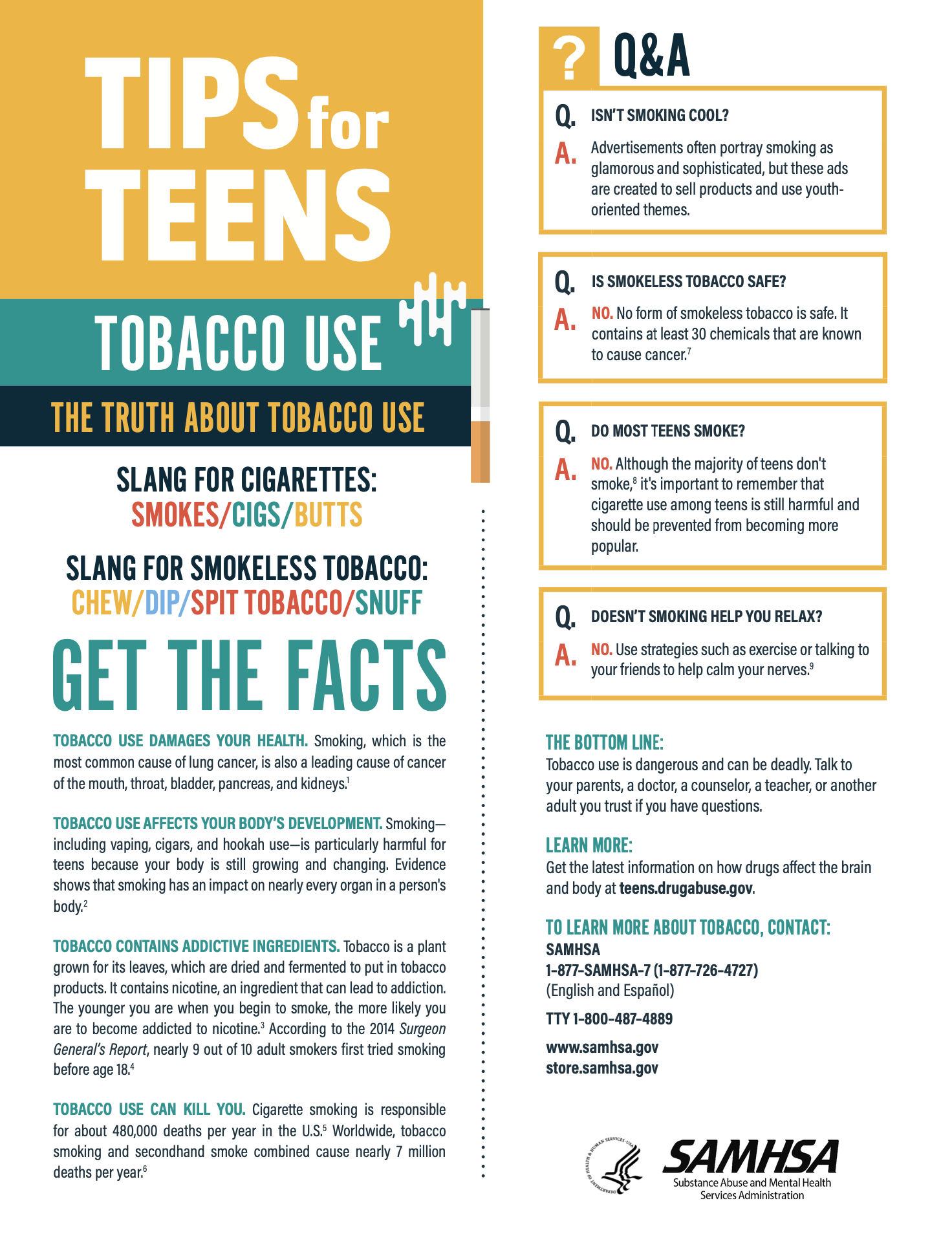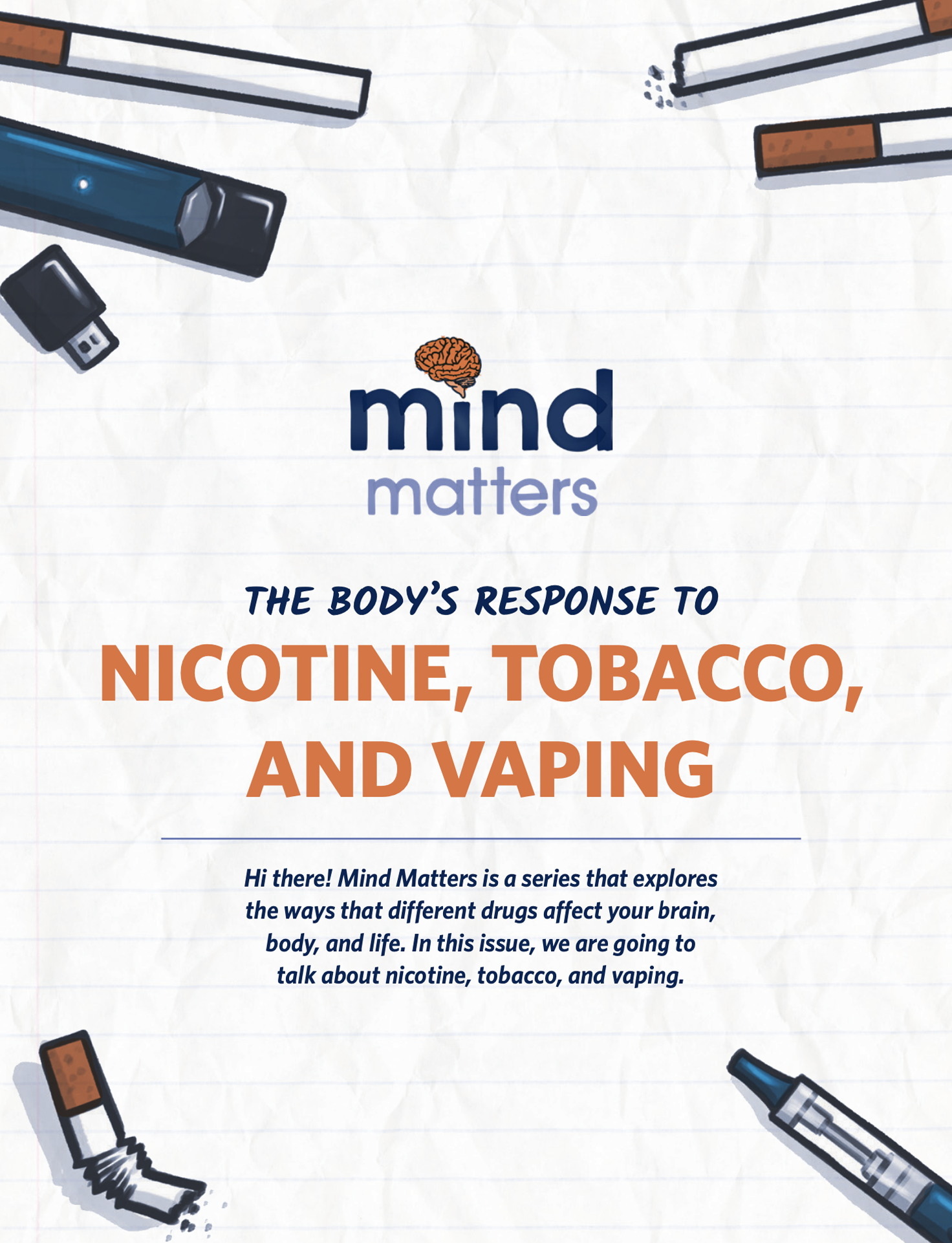

Tobacco is a crop that is grown all over the world. The main addictive ingredient is called, “Nicotine.” The minimum legal sale age of tobacco products in the state of Tennessee is 21. The most common avenues of tobacco use are cigarettes, cigars, assorted types of chewing tobacco, and e-cigarettes (learn more about e-cigarettes on the Vaping page).
Tobacco use remains the leading preventable cause of death in the world – 8 million deaths due to tobacco use annually. Specifically tobacco smoking causes cancer, heart disease, stroke, lung diseases, diabetes, and chronic obstructive pulmonary disease (COPD), which includes emphysema and chronic bronchitis. Smoking also increases risk for tuberculosis, certain eye diseases, and problems of the immune system, including rheumatoid arthritis. More than 16 million Americans are living with a disease caused by smoking.
Secondhand smoke is when persons, who do not smoke, are exposed to the tobacco smoke of another. Secondhand smoke exposure contributes to approximately 41,000 deaths among nonsmoking adults and 400 deaths in infants each year.
Thirdhand smoke is made up of the pollutants that settle indoors when tobacco is smoked. The chemicals in thirdhand smoke are the same as secondhand smoke (nicotine as well as cancer-causing substances such as formaldehyde, naphthalene and others). This is when smoke can become embedded in most soft surfaces such as clothing, furniture, drapes, drywall, bedding, and carpets. It also settles as dust-like particles on hard surfaces such as walls, floors and in vehicles. Thirdhand smoke can remain for many months even after smoking has stopped.
Check out the information below to learn more about tobacco use challenges.
*From CDC, NIDA, Mayo Clinic




